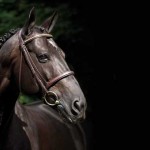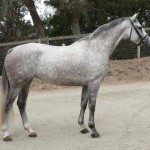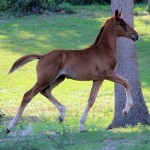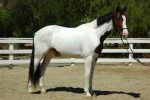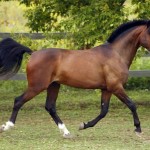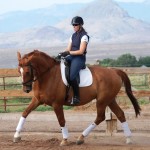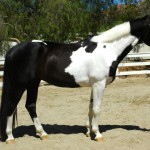Swedish Warmblood
The Swedish Warm blood, one of the oldest breeds of Warmblood horses, were developed in the Stromsholm and Flyinge region of Sweden. These horses have been widely exported all over the U.S.A, and Europe used as riding horses because of their smooth and comfortable pace.
Swedish Warmblood Pictures
- Black Swedish Warmblood
- Grey Swedish Warmblood
- Swedish Warmblood Foal
- Swedish Warmblood Horse
- Swedish Warmblood Jumping
- Swedish Warmblood Pictures
- Swedish Warmblood Stallion
- Swedish Warmblood
Quick Information
| Temperament and Personality | Friendly; gentle; stable-minded; calm; reserved; |
| Physical Description | Small-sized, neat head; long, graceful neck; well-muscled, sloping shoulders; compact body; straight back; strong legs; rounded quarters and short cannons |
| Lifespan | More than 25 years if good care is taken |
| Colors | Roan, Brown, Gray |
| What are they used for | General riding along with a variety of sports like dressage, jumping, and eventing |
| Weight | Approximately 1025 pounds |
| Height (Size) | 16 to 17 hands |
| Gaits | Easy, straight and flowing gaits |
| Health | Generally healthy and hardy with no known breed-specific health issues; Have a slow maturity level and will grow till five years of age; Legs should be protected from injuries by using leg wraps, boots or bell boots because of their immense stride |
| Popular Traits | Handsome; easy-to-manage; and versatile |
| Diet | Being big eaters, they can survive on hay, alfalfa, and grass. |
| Blood Type | Warm blood |
| Country of Origin | Sweden |
| Ancestors | Arabian, Hanoverian, Thoroughbred, and Trakehners |
| Breed Standards | Swedish Warm blood Association of North America |
Swedish Warm blood Dressage Horse Video:
History
This particular breed possesses a unique history behind its origination. According to archaeological evidence, the existence of these horses dates back to as early as 4000 BCE. They were used by the Scandinavian settlers to meet their various needs. During the 1600s, the bad weather conditions that plagued Sweden made it exceedingly difficult to produce high-quality horses. Though this breed was dependable and hardy enough, the Swedes needed large, robust breeds to suffice the warfare for which imports were made from other countries. The immense war led to a rapid depletion in the number of cavalry horses. In the 17th century, the breeding programme was again initiated with Spanish and Friesian horses being imported and crossed with the local mares for the purpose of producing robust and active horses. However, the focus gradually shifted from producing a breed for war and work. Rather attempts were made to create a horse suited for riding, dressage, and other sports events.
During the 19th and 20th centuries, the bloodlines of the Arabian, Hanoverian, Thoroughbred and Trakehner was introduced, which resulted in the powerful and elegant Swedish Warm blood horse as seen in the present times. The years 1920 to 1930 had been crucial in their development with the Thoroughbreds Hamlet, Tribun and Hamplemann significantly contributing towards their development.
In the year 1928, the Swedish Warmblood Association (ASVH or Avelsföreningen för Svenska Varmblodiga Hästen) had been formed that took the initiative of breeding versatile horses having great movements and a pleasing temperament. It has about twenty-five regional member associations which arrange tests and inspections for young horses. The appeal of these animals gradually spread to other countries with the first official inspection being held in North America in the year 1981. The SWANA (The Swedish Warmblood Association of North America) was founded during the 80s and continues working towards promoting and maintaining the consistency of this breed in North America. The first stud book had been published in the year 1874 with a complete registration of mares used for breeding and their foals being maintained.
Interesting Facts
- Briar 899 (having a pedigree mixed with Swedish Warmblood, Hanoverian and Thoroughbred lines) is credited to be the world’s highest ranked stallion in the field of dressage seven years in a row.
- In the Seoul games of 1988, six out of the thirteen participating Swedish Warmblood horses won medals.
- The Swedish Warmblood Drabant had six of his sons participating in the Roman Olympiad held in 1960.
- Van Vivaldi is an elegant Swedish Warmblood stallion having good leg action and a great sense of balance.


